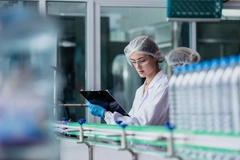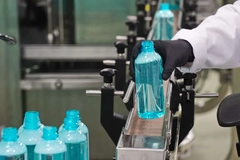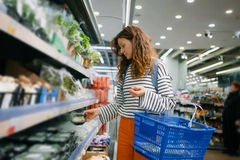Focus on Latin America: Amcor, AJE Group and Greenback discuss the region’s “highly diverse” packaging regulations

Packaging supply chains in Latin America are increasingly connected, offering diverse challenges and opportunities. We speak to Amcor Latin America, the regional beverage giant AJE Group Colombia and Greenback Recycling Technologies about the latest packaging regulation updates in the region.
Mariano Herrera, product development, innovation and project management office director for Amcor Latin America, tells Packaging Insights about key trends that align with global movements while also responding to specific regional demands and challenges, such as: “More sustainable solutions, customization and innovation, automation, and digitalization, along with regulatory compliance and traceability.”
Armando Russi, public affairs and sustainability manager at AJE Group Colombia and executive president of the International Chamber of Climate Business, highlights: “Latin America is making significant progress toward sustainable packaging, though the region faces substantial challenges due to disparities in infrastructure and regulations among countries.”
“The regulatory landscape in Latin America is highly diverse and has undergone significant changes in recent years. Countries like Chile and Colombia are regional leaders with robust frameworks addressing the entire lifecycle of plastics.”
Meanwhile, Carlos Ludlow-Palafox, the chief technology officer and co-founder of the UK-based Greenback Recycling Technologies and an expert on Latin America, discusses how some countries in the region are achieving notably high recycling rates for some materials despite lacking concrete regulations.
Global influences, local market needs
Amcor’s Herrera points to the “strong push” for more sustainable packaging solutions across Latin America.
 In countries like Brazil and Mexico, regulatory frameworks are being introduced to support more sustainable practices.“Governments and businesses are increasingly focusing on reducing plastic waste, especially single-use plastics, and are turning to recyclable or compostable materials. In countries like Brazil and Mexico, regulatory frameworks are being introduced to support more sustainable practices,” says Herrera.
In countries like Brazil and Mexico, regulatory frameworks are being introduced to support more sustainable practices.“Governments and businesses are increasingly focusing on reducing plastic waste, especially single-use plastics, and are turning to recyclable or compostable materials. In countries like Brazil and Mexico, regulatory frameworks are being introduced to support more sustainable practices,” says Herrera.
“As consumer preferences shift,” he continues, “there is an increasing demand for more personalized and visually appealing packaging.”
“Companies are looking for innovative packaging designs that enhance branding and offer a unique experience to consumers, especially in F&B.”
Regarding automation and digitalization, Herrera says: “The packaging industry is increasingly integrating advanced technologies like AI, robotics and IoT to streamline production processes. Automation helps improve efficiency and reduce waste, while digital technologies enable more precise production and real-time monitoring.”
Lastly, he outlines the divergent legislations across the region as pivotal: “Governments are implementing stricter regulations regarding packaging waste management, product labeling and environmental impact. This includes measures to improve transparency and the traceability of materials used in packaging.”
“These trends show how the Latin American packaging industry is evolving in response to both global influences and local market needs, which includes providing responsible packaging that meets evolving consumer behaviors.”
Contrasting regulations and adaptations
AJE Group’s Russi shares more details about the region’s current regulatory landscape for packaging, how it responds to the global push for improved sustainability and how different Latin American countries perform. “Differences across countries are evident, reflecting varied economic, social and environmental realities.”
 Armando Russi, public affairs and sustainability manager at AJE Group Colombia, noted significant progress despite disparities.“Chile stands out with its extended producer responsibility (EPR) law, which mandates recycling targets, promotes eco-design and requires traceability and the incorporation of recycled materials into production.”
Armando Russi, public affairs and sustainability manager at AJE Group Colombia, noted significant progress despite disparities.“Chile stands out with its extended producer responsibility (EPR) law, which mandates recycling targets, promotes eco-design and requires traceability and the incorporation of recycled materials into production.”
Meanwhile, Colombia, under Law 2232, has set ambitious goals for recycled PET in plastic packaging, requiring up to 90% recycled content in specific categories by 2030. “These regulations are compelling companies to adapt their supply chains to meet new demands,” says Russi.
He adds that Chile’s EPR law mandates recycling and recovery targets, supports eco-design and promotes transparency through traceable systems. Meanwhile, Colombia’s Law 2232 not only bans single-use plastics but also sets clear goals for substituting these materials with sustainable alternatives, such as biodegradable or recycled options.
“Brazil, while lacking a national EPR framework, has shown regional advancements in states like São Paulo, where local policies restrict single-use plastics and encourage circular economy practices.”
“A shared challenge across the region is the existence of banned plastic lists, which are making certain packaging types obsolete before adequate recycling chains are in place. This highlights the need for an integrated approach that ensures both sustainability and the economic feasibility of solutions,” says Russi.
He explains that progress in Brazil is more localized, with states like São Paulo and Rio de Janeiro enforcing single-use plastic bans and encouraging recycling programs.
“However, fragmented regulations across the region create obstacles for multinational companies, making it critical to harmonize policies to enhance compliance and efficiency in investment planning.”
“In contrast, countries like Bolivia and Guatemala have limited or nascent regulations, which hinder the development of value chains for recycled materials. These disparities underscore the need for greater collaboration between nations and the establishment of common standards to drive sustainability across the region.”
Sustainability beyond legislation
But just because some countries in Latin America lack laws that regulate packaging and packaging waste disposal, it does not mean that there have been no developments, highlights Greenback Recycling Technologies’ Ludlow-Palafox.
“I would seriously disagree with anyone saying that because there’s no regulation, there’s no recycling. That is something that doesn’t suit the European mind very well, but you have to understand that in Latin America, Africa, Asia and in a lot of developing countries, things do not work like that.”
 Mexico City, with 23 million people, has a recycling rate of 75% for PET bottles.“If there’s a value in a material, someone will pick it up,” he argues. “I’m not saying it’s the right thing from a social point of view, let’s not sugarcoat it. The point is that a place like Mexico City, with 23 million people, has a recycling rate of 75% for PET bottles — better than pretty much any European country.”
Mexico City, with 23 million people, has a recycling rate of 75% for PET bottles.“If there’s a value in a material, someone will pick it up,” he argues. “I’m not saying it’s the right thing from a social point of view, let’s not sugarcoat it. The point is that a place like Mexico City, with 23 million people, has a recycling rate of 75% for PET bottles — better than pretty much any European country.”
“In many places, there is a disjoint relationship between regulation and waste activities and recycling because one is not necessarily driving the other one. The same applies to many materials, including paper, cardboard and metals. Brazil has a recycling rate of aluminum cans of pretty much 100%.”
Ludlow-Palafox says that the formalization of the sector is likely to primarily take place in larger economies.
“Brazil has two 216.4 million people and Mexico 130 million. It is definitely possible to put a business plan together and say: we are going to try to formalize this sector — which is really needed, because otherwise, you end up with people living in rubbish, without any security and with poor health.”
He adds that reprocessing some of these materials is not an issue as the major economies in the region already have some developed and significant sectors, including plastic and aluminum sectors. Yet, reprocessing remains an issue for smaller economies, which have to find a way to ship the collected recyclable waste to larger neighbours over large distances.











